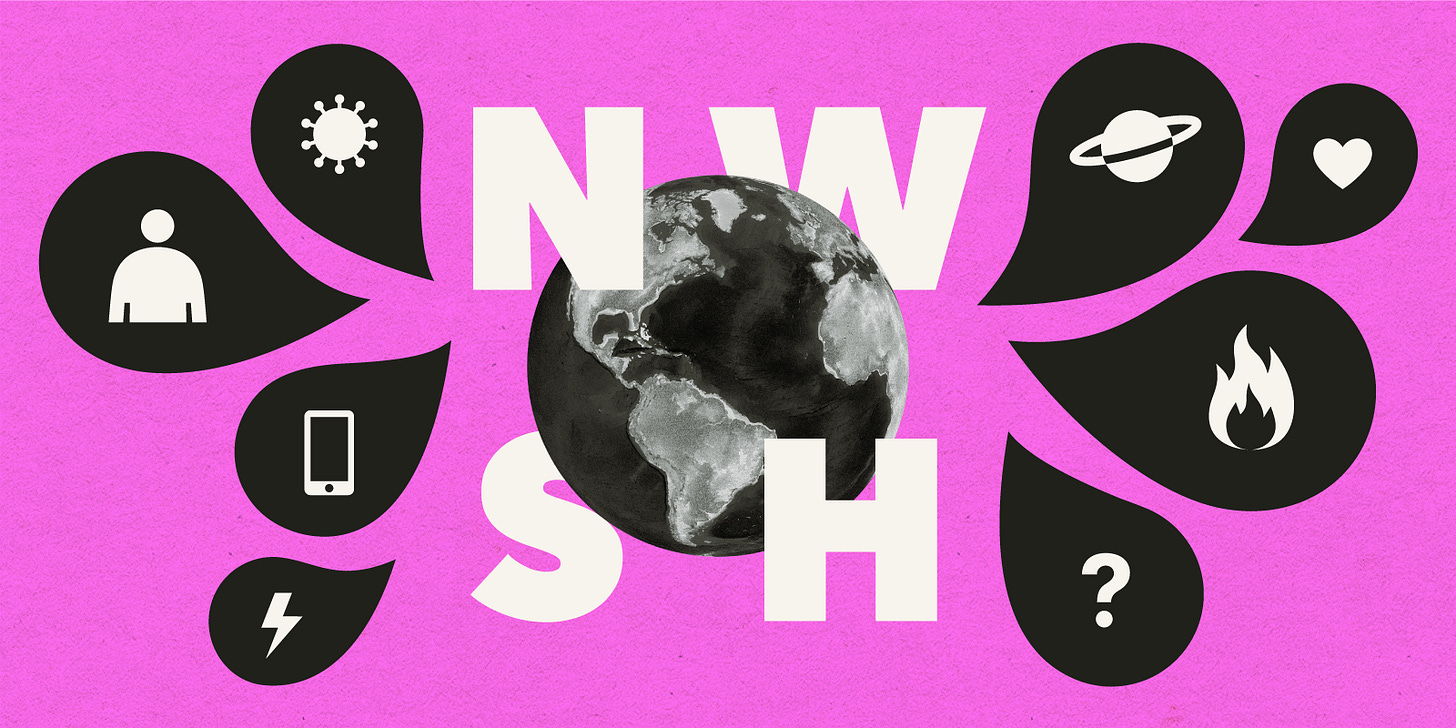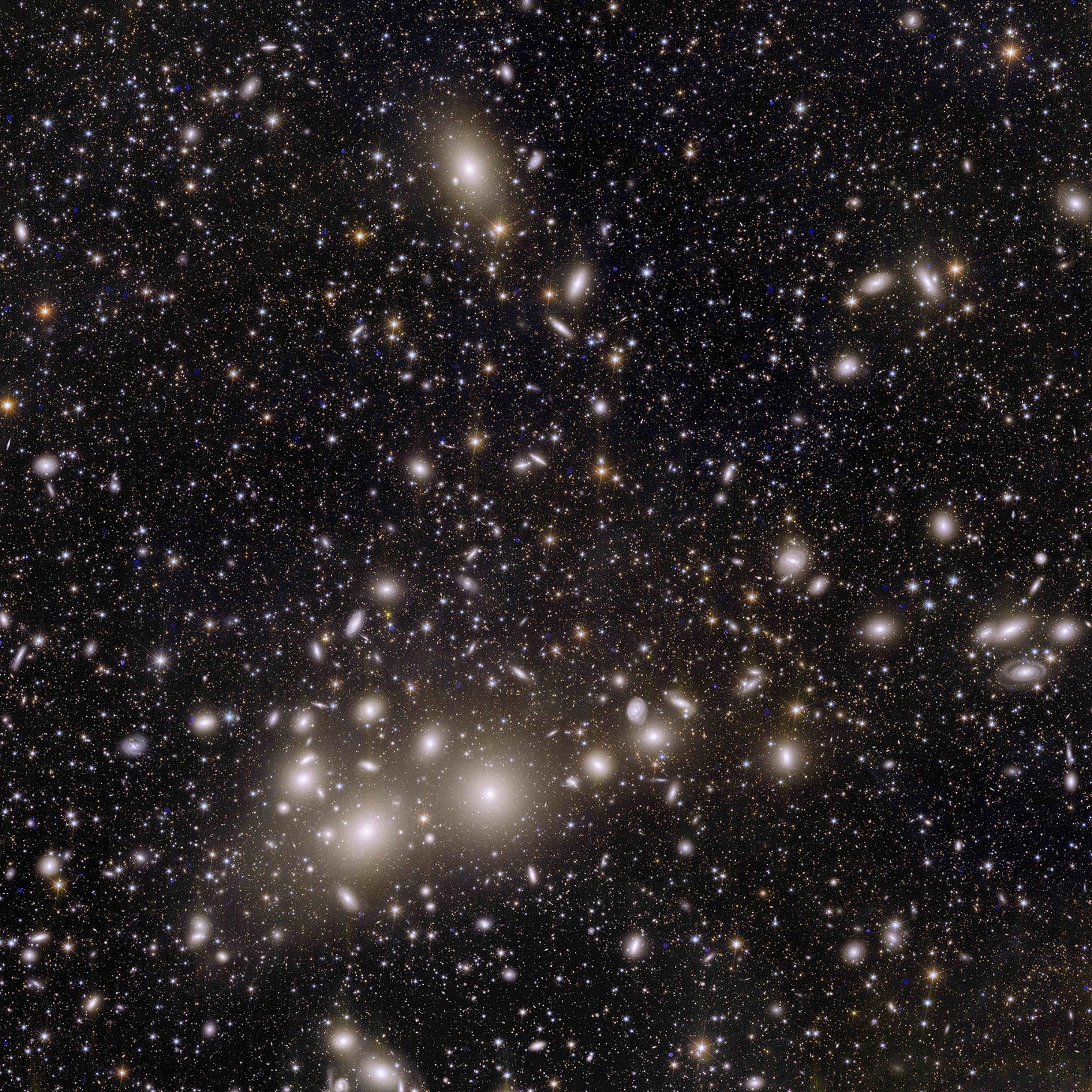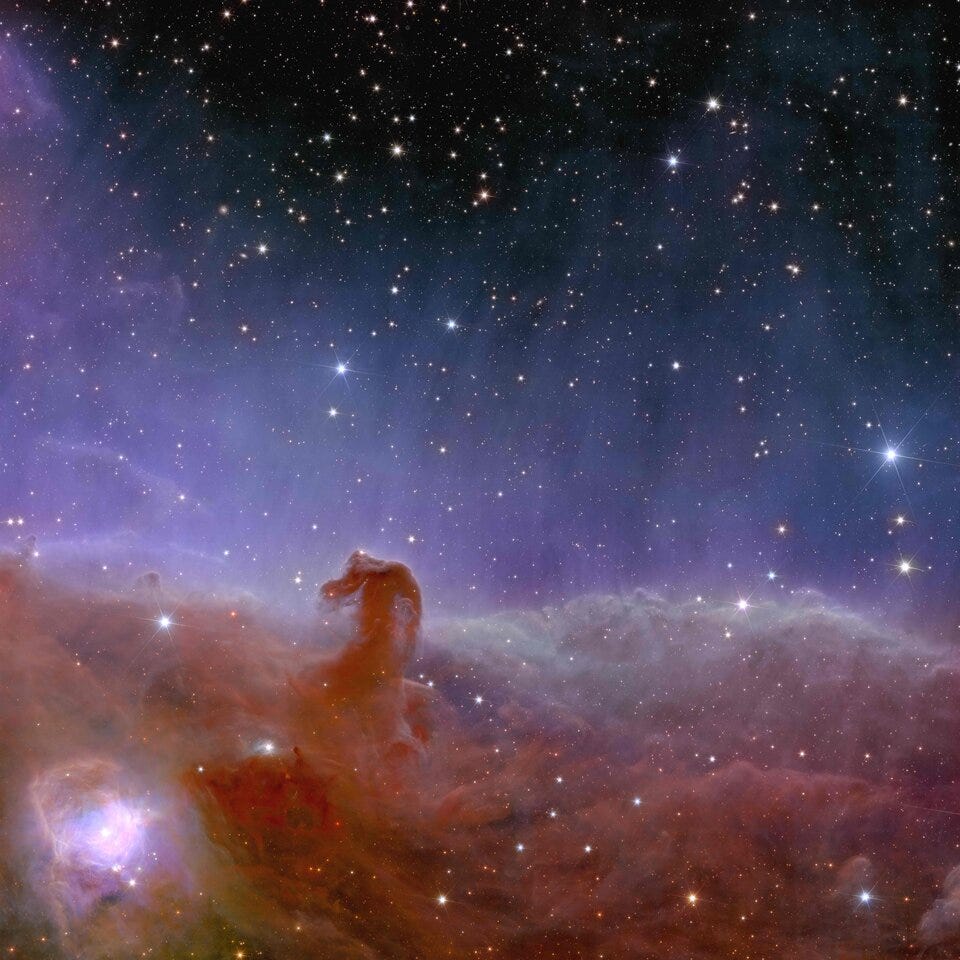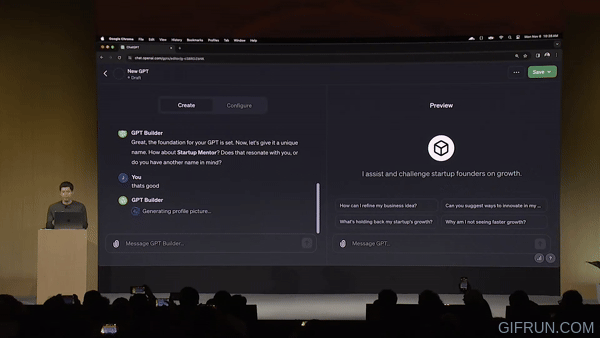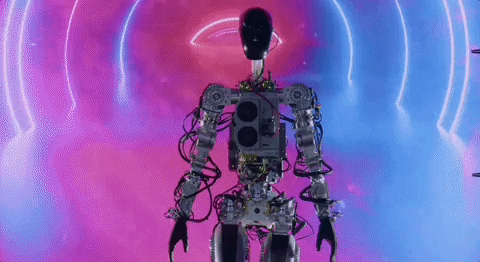Welcome to the mid-week update from New World Same Humans, a newsletter on trends, technology, and society by David Mattin.
If you’re reading this and haven’t yet subscribed, join 25,000+ curious souls on a journey to build a better future 🚀🔮
To Begin
It’s a bumper instalment this week. What do we have in store?
The Chinese government is calling on its technology industry to roll out millions of advanced humanoid robots.
Also, NASA wants to learn how to extract breathable oxygen from Moon dust. And OpenAI says everyone can now create their own bespoke version of ChatGPT.
Let’s go!
🤖 Work machines
This week, a glimpse of the coming collision between human population dynamics and autonomous machines.
A new study by researchers at University College London found fears of climate breakdown are changing decision-making around whether or not to have children. Published in the journal PLOS Climate, the research found that climate concern was associated with a desire for fewer children, or none at all.
The researchers say theirs is the first systematic study of the way attitudes to climate change are affecting reproductive choices.
Meanwhile, the Chinese Ministry of Industry and Information Technology (MIIT) issued a nine-page communique calling for domestic mass production of advanced humanoid robots by 2025. By 2027, the document says, these robot workers should be ‘an important new engine of economic growth’.
But what is the connection between new trends in reproductive decision making and China’s dash towards humanoid robots?
Here’s a graph of the birth rate in China from 2000 to 2022:
⚡ NWSH Take: The CCP knows that China is losing its battle with demographics. If the country is to become the 21st-century hegemon that President Xi dreams about, then it needs an army of workers. But instead China is watching its birth rate plummet. Meanwhile, the Global North is facing the same challenge; in north America and western Europe population growth flatlined long ago. And now it seems that fears over climate change are only set to exacerbate that trend. // This is a huge structural challenge; fewer workers tends to mean a less productive and smaller economy. So what to do? The CCP have already tried ditching the one child policy and incentivising couples to have more children; it didn’t work. This week’s clarion call from the MIIT offers us a glimpse of an alternative answer: robots. If China won’t have enough human workers to sustain economic growth, then the CCP hopes humanoid robot workers can do the job(s) for them. // Innovators in the Global North are heading in the same direction. This week, Tesla posted over 50 jobs ads for its Optimus robot team. Elon Musk — who has long bemoaned population decline and its coming impacts — has said he believes Optimus will end up being a bigger part of Tesla’s business than EVs. And two weeks ago I wrote on how Amazon are trialling the Digit humanoid robot in some US fulfilment centres. // My co-founder at The Exponentialist, Raoul Pal, says that in the new world we’re building robots are demographics. In other words, the rise of autonomous machines is set to decouple economic growth from population growth. The CCP, Musk, and many others besides are making the same bet. And my guess? They’re going to be proven right.
🌌 Space out
NASA continues to prepare for its mission to the Moon. This week, further news.
The Agency wants to explore methods to extract breathable oxygen from Moon dust. Its Space Technology Mission Directorate is seeking input from industry partners and external researchers, and hopes to create a demonstration technology soon.
NASA hopes to put humans back on the Moon for the first time since 1972 with its Artemis 3 mission, currently planned for 2025.
Meanwhile, stunning pictures came back this week from the European Space Agency’s Euclid telescope. Launched in July, Euclid is now around 1.5 million kilometres from Earth; that’s about four times as far away as the Moon. And it’s capturing images of incredible clarity.
This is the Perseus cluster, a group of over 1,000 galaxies located 240 million light years from Earth. Each galaxy pictured — and there are a further 100,000 galaxies in the background of the shot — contains hundreds of billions of stars:
Here’s the Horsehead Nebula, a cloud of dust and gas in the Orion constellation:
⚡ NWSH Take: Okay, this entire segment was mainly an excuse to show you the breathtaking images coming back from Euclid. But there is an underlying truth here. We’re amid a new space age, due mainly to the insane drop in the cost of access to space. Back in 2010 launch costs hovered at around $20,000/kg; today they’re around $1,000/kg. That’s thanks mainly to the reusable rocket technology developed by SpaceX. We’re heading back into space via multiple partnerships between the international space agencies and private companies. And this time the plan is to stay there. // One signal of the emerging public-private space ecosystem? This week, SpaceX agreed to deliver the US military’s new space plane, the X-37B, into orbit in its Heavy Falcon rocket in December. And private space companies, including SpaceX, will play a huge role in the upcoming Artemis crewed mission to the Moon. Most analysts reckon that mission will end up being delayed until 2026/7. Even so, the next few years are set to be a thrilling road towards the lunar surface. Expect Moon hype to reach fever pitch. And from there, of course, all roads will lead to Mars.
🧠 Your intelligence
There’s little doubt about the biggest story in the mainstream tech press this week.
OpenAI made headlines all over again with the launch of custom GPTs: bespoke versions of ChatGPT that any user can create using simple natural language instructions and their own training content or data.
The feature was announced at OpenAI Dev Day, which saw CEO Sam Altman create a custom Startup Mentor GPT live on stage in about five minutes.
X (formerly Twitter) went wild. And yes, a million and one GPTs are assuredly coming.
How is this going to play out?
⚡ NWSH Take: Remember back in 2012, when every third friend of yours was making an app? OpenAI are hoping to recreate that magic all over again. They want to be the platform that profits from a huge wave of AI innovation. ChatGPT Plus users will be able to create custom GPTs and charge others for use, and Altman say they’ll be rewarded via revenue share. // Remember, any ChatGPT Plus user can now create a bespoke GPT in a few minutes. There will be a vast long tail of these things. The winners, though, will be those with (i) deep reserves of proprietary content or data that they can use to enhance the outputs of their bot, and (ii) audiences who are receptive to their creations. // But creating a bespoke GPT is now so easy that we’ll also see something we didn’t with apps. That is, individuals creating bespoke bots just for their own use — to help them manage their accounts, or choose birthday presents for family and friends, and much else besides. Yes, this is an App Store moment for AI. But it also marks another beginning: of personalised machine intelligence on tap.
🗓️ Also this week
💥 The Exponentialist, my new premium and enterprise-level research service, launched to the world! It’s a partnership between me and the macro economist and Real Vision CEO Raoul Pal. To mark launch day, we’ve made an excerpt of the first essay free for all to read — watch out for it in your inbox on Sunday.
📌 New tech company Humane launched the AI Pin. This long-awaited first product from Humane is a voice and gesture-controlled device that clips to your shirt and integrates with ChatGPT and other services.
Humane hope their ‘disappearing computer’ will be the next iPhone. It remains to be seen whether people really want to talk to a badge on their lapel. One fascinating signal, though? See how OpenAI — and their partner, Microsoft — are set to become the underlying infrastructure that fuels a whole raft of AI innovations. Where are Alphabet? And when will Apple launch their own generative AI play? It’s going to be fascinating watching this battle unfold.
🇨🇳 Nvidia has developed special new AI chips for China according to Chinese media. Recent US regulations prevented Nvidia from selling its powerful A100 AI chip to Chinese companies. The new chips — which include the H20, reportedly only half as powerful as the A100 — would not fall under the restrictions. Nvidia have so far refused to comment.
🧬 Scientists have created a new strain of yeast with a genome that is over 50% synthetic DNA. A group of labs called the Sc2.0 consortium has been attempting to create a strain of yeast with a fully synthetic genome for 16 years now; this latest advance marks a major step forward. So far, scientists have only managed to synthesise the much simpler genomes of some viruses and bacteria.
👨⚕️ Neuralink is seeking a volunteer for its first brain implant surgery. The company wants to find a quadriplegic adult under the age of 40, who will allow a surgeon to implant electrodes and small wires into the part of the brain that controls the forearms and hands.
🙈 A new UN survey says 85% of citizens across 16 countries are worried about online disinformation. The 16 countries surveyed will each host elections in 2024. The survey found that 87% of respondents fear disinformation will influence the outcome of those elections. Back in New Week #122 I wrote on new research showing far fewer US adults are following mainstream sources of news.
🐝 A team of Chinese researchers created a swarm of drones able to ‘talk to one another’ and assign tasks to achieve a shared goal. The drone swarm is fuelled by a large language model, which enables the drones to act as AI agents that can reason in language, share that reasoning with other drones, and determine courses of action.
📱 Samsung unveiled its new generative AI model, Gauss, and says it will soon arrive on its devices. The model can generate text, code, and images, and the company says it will be available on its Galaxy S4 phone, due to be released in 2024. For the second time in this week’s instalment I ask: how long until Apple deploys its own on-device LLM. Rumour has it that the company is planning a radical LLM-based overhaul of its AI assistant, Siri.
🌍 Humans of Earth
Key metrics to help you keep track of Project Human.
🙋 Global population: 8,072,064,026
🌊 Earths currently needed: 1.81498
🗓️ 2023 progress bar: 86% complete
📖 On this day: On 11 November 1675 German mathematician Gottfried Leibniz demonstrates integral calculus for the first time.
Robot Army
Thanks for reading this week.
The enmeshment of labour force dynamics and robots will be one of the most consequential shifts of the coming decades.
This newsletter will keep watching, and working to make sense of it all. And you can help!
Now you’ve reached the end of this week’s instalment, why not forward the email to someone who’d also enjoy it? Or share it across one of your social networks, with a note on why you found it valuable. Remember: the larger and more diverse the NWSH community becomes, the better for all of us.
I’ll be back on Sunday. Until then, be well.
David.
P.S Huge thanks to Nikki Ritmeijer for the illustration at the top of this email. And to Monique van Dusseldorp for additional research and analysis.


